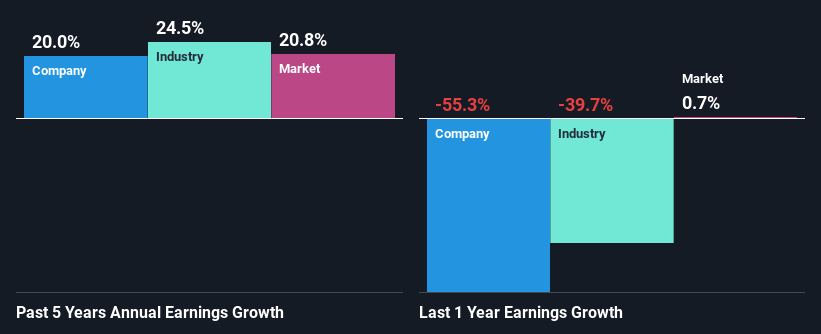- Poland
- /
- Paper and Forestry Products
- /
- WSE:BFC
Should Weakness in Biofactory S.A.'s (WSE:BFC) Stock Be Seen As A Sign That Market Will Correct The Share Price Given Decent Financials?

With its stock down 16% over the past week, it is easy to disregard Biofactory (WSE:BFC). But if you pay close attention, you might find that its key financial indicators look quite decent, which could mean that the stock could potentially rise in the long-term given how markets usually reward more resilient long-term fundamentals. Particularly, we will be paying attention to Biofactory's ROE today.
Return on equity or ROE is a key measure used to assess how efficiently a company's management is utilizing the company's capital. Simply put, it is used to assess the profitability of a company in relation to its equity capital.
Check out our latest analysis for Biofactory
How Do You Calculate Return On Equity?
The formula for return on equity is:
Return on Equity = Net Profit (from continuing operations) ÷ Shareholders' Equity
So, based on the above formula, the ROE for Biofactory is:
6.6% = zł419k ÷ zł6.3m (Based on the trailing twelve months to June 2023).
The 'return' refers to a company's earnings over the last year. One way to conceptualize this is that for each PLN1 of shareholders' capital it has, the company made PLN0.07 in profit.
What Has ROE Got To Do With Earnings Growth?
So far, we've learned that ROE is a measure of a company's profitability. Based on how much of its profits the company chooses to reinvest or "retain", we are then able to evaluate a company's future ability to generate profits. Generally speaking, other things being equal, firms with a high return on equity and profit retention, have a higher growth rate than firms that don’t share these attributes.
Biofactory's Earnings Growth And 6.6% ROE
When you first look at it, Biofactory's ROE doesn't look that attractive. A quick further study shows that the company's ROE doesn't compare favorably to the industry average of 8.5% either. However, we we're pleasantly surprised to see that Biofactory grew its net income at a significant rate of 20% in the last five years. So, there might be other aspects that are positively influencing the company's earnings growth. For instance, the company has a low payout ratio or is being managed efficiently.
As a next step, we compared Biofactory's net income growth with the industry and found that the company has a similar growth figure when compared with the industry average growth rate of 25% in the same period.

The basis for attaching value to a company is, to a great extent, tied to its earnings growth. What investors need to determine next is if the expected earnings growth, or the lack of it, is already built into the share price. This then helps them determine if the stock is placed for a bright or bleak future. Is Biofactory fairly valued compared to other companies? These 3 valuation measures might help you decide.
Is Biofactory Efficiently Re-investing Its Profits?
The high three-year median payout ratio of 55% (implying that it keeps only 45% of profits) for Biofactory suggests that the company's growth wasn't really hampered despite it returning most of the earnings to its shareholders.
Moreover, Biofactory is determined to keep sharing its profits with shareholders which we infer from its long history of seven years of paying a dividend.
Summary
On the whole, we do feel that Biofactory has some positive attributes. Namely, its high earnings growth. We do however feel that the earnings growth number could have been even higher, had the company been reinvesting more of its earnings and paid out less dividends. So far, we've only made a quick discussion around the company's earnings growth. You can do your own research on Biofactory and see how it has performed in the past by looking at this FREE detailed graph of past earnings, revenue and cash flows.
Valuation is complex, but we're here to simplify it.
Discover if Biofactory might be undervalued or overvalued with our detailed analysis, featuring fair value estimates, potential risks, dividends, insider trades, and its financial condition.
Access Free AnalysisHave feedback on this article? Concerned about the content? Get in touch with us directly. Alternatively, email editorial-team (at) simplywallst.com.
This article by Simply Wall St is general in nature. We provide commentary based on historical data and analyst forecasts only using an unbiased methodology and our articles are not intended to be financial advice. It does not constitute a recommendation to buy or sell any stock, and does not take account of your objectives, or your financial situation. We aim to bring you long-term focused analysis driven by fundamental data. Note that our analysis may not factor in the latest price-sensitive company announcements or qualitative material. Simply Wall St has no position in any stocks mentioned.
About WSE:BFC
Medium with mediocre balance sheet.
Market Insights
Community Narratives





